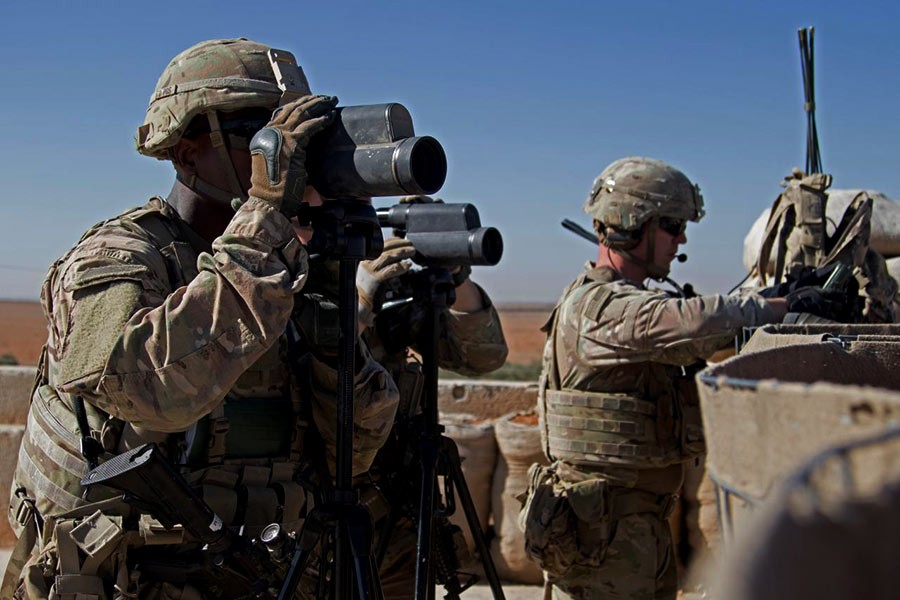The United States will leave 'a small peacekeeping group' of 200 American troops in Syria for a period of time after a US pullout, the White House said on Thursday, as President Donald Trump pulled back from a complete withdrawal.
Trump in December ordered a withdrawal of the 2,000 American troops in Syria, saying they had defeated Islamic State militants there, even as US-backed Syrian forces continued a final push against the group’s last outpost, reports Reuters.
But Trump has been under pressure from multiple advisers to adjust his policy to ensure the protection of Kurdish forces, who supported the fight against Islamic State and who might now be threatened by Turkey, and to serve as a bulwark against Iran’s influence.
“A small peacekeeping group of about 200 will remain in Syria for a period of time,” White House spokeswoman Sarah Sanders said in a statement.
The decision was announced after Trump spoke by phone to Turkish President Tayyip Erdogan. A White House statement said the two leaders agreed, regarding Syria, to “continue coordinating on the creation of a potential safe zone.”
A senior administration official said Trump’s decision had been in the works for some time. It was unclear how long the 200 troops would be expected to remain in the area or where exactly they would be deployed.
Leaving even a small group of US troops in Syria could pave the way for European allies to commit hundreds of troops to help set up and observe a potential safe zone in northeast Syria.
The commander of US-backed Syrian forces has called for 1,000 to 1,500 international troops to remain in the country to help fight Islamic State and expressed hope the United States, in particular, would halt plans for a total pullout.
‘CLEAR DIRECTION’
The decision to retain peacekeepers could help Trump overcome criticism that he had ordered a precipitous withdrawal from Syria that could lead to Islamic State regaining strength.
“This is a clear direction to our allies and coalition members that we will be on the ground in some capacity,” the senior US administration official said.
Until now, European allies have balked at providing troops unless they received a firm commitment that Washington was still committed to the region.
Belgian Defense Minister Didier Reynders told reporters on Thursday before a meeting with acting Pentagon chief Patrick Shanahan that the issue of keeping troops in Syria in the future would be a matter for discussion with US officials.
Turkey wants to set up a safe zone with logistical support from allies and says it should be cleared of the US-backed Kurdish YPG militia, which Ankara considers a terrorist group.
The White House did not say where exactly its troops would be based. In addition to northeast Syria, officials have talked about the importance of keeping some troops at the strategic Tanf garrison on the Iraq-Jordan border.
A US official, speaking on condition of anonymity, said the initial plan was to have some troops in northeastern Syria and some at Tanf. The official said planning was ongoing and could change.
The Tanf garrison was set up when Islamic State fighters controlled eastern Syria bordering Iraq. But since the militants were driven out, Tanf has assumed a role as part of a US strategy to contain Iran’s military buildup.
US officials have told Reuters that while in Munich last week, Shanahan held a meeting on Syria with a small group of defense ministers. They talked about needing some sort of security arrangement in northeast Syria after the United States left. Shanahan will meet his Turkish counterpart on Friday.
Republican Senator Lindsey Graham issued a statement applauding Trump’s decision to keep a small contingent of US troops in Syria as part of an international stabilising force, saying the president had followed sound military advice that would help avoid the problems the United States faced in Iraq.


